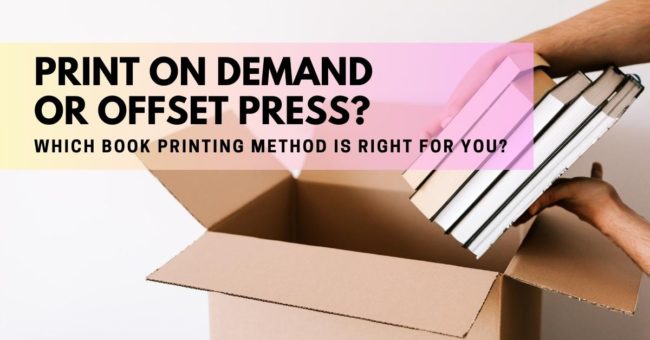Few things are as exciting as opening the box holding copies of your freshly printed, self published book! After all the months, maybe years, of crafting and developing your story and making careful and intentional choices in its production, it is so satisfying to finally hold the finished book in your hands. In this newsletter we will explore common options for printing and some important differences between them that will empower you to make choices that will help bring your book to life and save you potential disappointment from unexpected results.
Self-publishing authors are faced with many choices during the production process of their book. An important one is the choice between digital or offset printing. While both methods have their pros and cons, the decision ultimately depends on personal preferences and budget. Here's a quick breakdown of each:
Print on Demand (POD) platforms like Ingram Spark and KDP have made self-publishing more accessible than ever before. They offer user-friendly tools and affordable options, allowing authors to publish their work and reach a wide audience through extensive distribution channels. However, it's important to note that POD books can differ significantly in quality compared to books printed traditionally with an offset press. POD relies on digital printing, which is cost-effective for small print quantities but unfortunately lacks reliable consistency in the final product. POD companies also work with multiple printers to get the job done. Each book is printed individually as its own print run and the machine is not calibrated between runs making it impossible to guarantee consistency between printers and runs. Nevertheless, readers will likely never see the book they have purchased side-by-side with the same book that may have been printed elsewhere, so the differences may go unnoticed to them.
Offset printing is ideal for larger print runs and delivers high-quality results. It offers greater consistency and precision in color reproduction throughout the print run. Offset presses also provide options for a wider range of colors and higher quality paper choices. However, with this method there is a large upfront expense, you'll need storage for the printed books, the lead times are longer, and you will need to arrange your own distribution for the book.
In summary, print on demand allows for quick, flexible publishing and easy distribution at a low cost. It's suitable for printing a single copy or a small quantity, and you can even dropship a book anywhere that you like. It will be a fine looking book but, it may not meet your desired level of quality. Offset printing ensures a high-quality product but requires printing a large quantity, storage space, and a higher upfront investment. Additionally, you'll need to manage the distribution process yourself.
Help for Independent Presses
Book Design & Production
Have you written a nonfiction or fiction manuscript? After it has been professionally edited, I can design the interior pages and cover, plus guide you through the maze of book publishing and printing. To get started, contact me to discuss your project and my helpful guide for authors.

